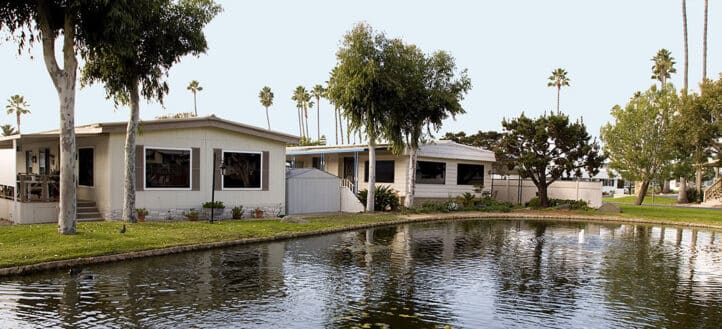Closer to home
Workforce housing fills a gap for middle-income families

For real estate managers overseeing workforce housing, the asset class affords many meaningful experiences beyond the résumé. Shannon Bodnar, CPM®, ARM®, senior vice president of compliance at Fairstead, recalls one instance while working in Charlotte, North Carolina, when she helped a nursing assistant who couldn’t afford to live in the same neighborhood where she worked. The one-hour commute each way impacted the woman’s ability to pick up her young child from daycare on time.

Shannon Bodnar, CPM®, ARM®, Fairstead
“She moved into our workforce housing community and was so excited,” says Bodnar, who has overseen workforce housing developments for municipal housing authorities and large real estate developers. “Her commute shrunk to four minutes, and her child enrolled in a school they loved. While she lived in our community, she was able to save money for a down payment and eventually moved into her own home. I think about her a lot as an example of the opportunities that workforce housing makes possible and how gratifying it is to manage these properties.”
Bridging the gap
Workforce, or middle-income housing, fills the need for individuals and families whose income exceeds traditional affordable housing limits but can’t cover market rate apartment rents.
“There are many families who make too much money to qualify for our Section 42 tax credit communities but who are nowhere near making three times the rental amount needed for leasing market rate housing,” says Kim Hurd, CAPS, executive vice president of property management for KCG Companies. “Workforce housing provides an option for those hardworking families caught in that gap.”

Kim Hurd, CAPS, KCG Companies
If data from the U.S. Census Bureau is any indication, more families are likely finding themselves in that same gap. Numbers from the latest American Community Survey covering 2017–2021 show that over 40% of renter households in the U.S. are housing cost-burdened. This means that 19 million American renter households spend more than 30% of their income on housing costs, such as rent or mortgage payments, utilities, and other fees.
Workforce housing is targeted at middle-income workers, such as teachers, police officers, firefighters, nurses, or other workers who may not be able to afford to live in the areas where they work. “These are some of the most important jobs in any city, and workforce housing creates opportunities for those just starting out or early on in their careers to have a great place to live in an otherwise high-cost market,” Bodnar says.
To qualify for workforce housing, workers must make 60%–120% of the area median income (AMI), with exact numbers varying based on local regulations. Rents are typically restricted to 30% of the income level, Bodnar says.
Municipal origins
Property managers agree that the locations most in need of workforce housing are larger cities where the cost of apartment rentals is exploding. In these areas, incomes have not kept up with the rising costs of living, and new housing options aren’t being developed quickly enough.

Karla Burck, KCG Companies
“There is a need across the board, but the greatest need is in cities or urban areas where rents are skyrocketing,” says Karla Burck, executive vice president of development for KCG Companies. “It doesn’t make sense to look to rural areas for developing workforce housing because we would be at or below Low-Income Housing Tax Credit (LIHTC) rents. In general, higher-income areas have the greatest need for this product.”
Unlike other affordable housing programs overseen by the federal government, workforce housing is usually managed by local municipalities. “Counties and cities set the regulations of what they consider workforce housing to be and may have different requirements and reporting needs than affordable housing,” Bodnar says.
Properties and amenities
Workforce housing units can be found in a variety of property types, from mixed-income developments targeting workforce residents to units set aside as workforce housing within market rate buildings, Bodnar says.
Amenities at these properties rival those found at any other rental community.
“Our workforce housing communities offer business hubs, fitness centers, swimming pools, playgrounds, and other gathering spaces, as do our tax credit and market rate communities,” Hurd says. “The differences may come in the size of the amenity or the aesthetics.”
Bodnar adds that resident services and engagement are also important, with property managers working hard to get to know and understand their residents and what type of programming they desire.
Management considerations
From a property manager’s perspective, resident outreach and management duties are similar to those of managers at any other kind of residential community.
“Events and online advertising are key to introducing a community and getting people interested,” Bodnar says. “The leasing process just has one extra step to make sure a potential renter’s income will meet the AMI requirements set by the local municipality.”
Property managers beginning to work with workforce housing must do their homework and become well-versed in local rules and regulations. The proper documentation and reporting requirements vary by location, but there are typically fewer regulations than in federal affordable housing programs.
Benefits, such as a reduction in real estate tax liabilities, tax abatement, partial exemptions, and waivers in tap and impact fees, are also common, Burck says. “Investors and lenders are also willing to offer favorable financing options for workforce housing,” she says.
Because workforce housing is just beginning to take hold in some areas, property managers should keep abreast of newly available programs to meet the needs of this middle-income segment of the population.
“The rules are changing,” Burck says. “Workforce housing is a new initiative in the multifamily housing market, and we have to remain adaptable to continue meeting the needs of our ever-changing resident population.”
As for Bodnar, she still feels the same way she did when she helped the nursing assistant rent her workforce housing unit.
“This is a huge quality of life improvement. It cuts down on the cost and time of commuting to work and gives families access to vibrant, walkable communities that they may not be able to live in otherwise,” Bodnar says. “Workforce housing plays a critical role in the affordability ecosystem.”
Hurd agrees: “For me, this is an opportunity to give back to working families by providing housing that will strengthen the community as a whole.”
Issue: May/June 2023 Volume 88 Number 3
Similar Posts
Property spotlight
Be our guest
Ball State University property management students help med students settle...
Property spotlight
Condo conundrums
Managers of condominium buildings will continue to face many challenges...




